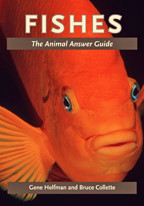
Johns Hopkins UniversityEst. 1876
America’s First Research University
Wild Thing: Turning the tables on the sharks in the gray suits
Wild Thing is an occasional series where JHU Press authors write about the flora and fauna of the natural world—from the rarest flower to the most magnificent beast.
Guest post by Gene Helfman

For reasons that remain mysterious, Giant Trevally (Caranx ignobilis, family Carangidae), a relative of pompanos and jacks, attack and kill reef sharks much larger than themselves but don’t eat them. Fishers in Palau in the Western Caroline Islands, Saipan in the Mariana Islands, and the Marshall Islands have documented large trevally singly or in pairsrepeatedly head-butting the sides of reef species such as Blacktip Sharks (Carcharhinus melanopterus, Carcharhinidae) and even Tiger Sharks (Galeocerdo cuvieri, Carcharhinidae).
The trevally focus their ramming attacks on the sides and gill region of the shark. The shark often defends itself by trying unsuccessfully to bite its more agile attacker. Sometimes, a shark will attempt to flee to deeper water but be forced back into the shallows by the attacking trevally. The trevally ignore their own injuries, such as multiple cuts on their heads where they contact the sharks, and keep ramming. After repeated high-speed rammings, the shark, bleeding from its gills, sinks to the bottom and dies. Dissections of victimized sharks indicate damage to several internal organs that were probably the result of the rammings. Interestingly, trevally may ram more than sharks. A Hawaiian spearfisherman was rammed by a large Giant Trevally, suffering three broken ribs.
Source: Diana L. McPherson, Kautchang Vince Blaiyok, and W. Bruce Masse. 2012. "The Lethal Ramming of Sharks by Large Jacks (Carangidae) in the Palau Islands, Micronesia." Pacific Science, vol. 66, no. 3.

(The views expressed in this guest post belong to the author and in no way reflect the official opinion of the JHU Press.)


